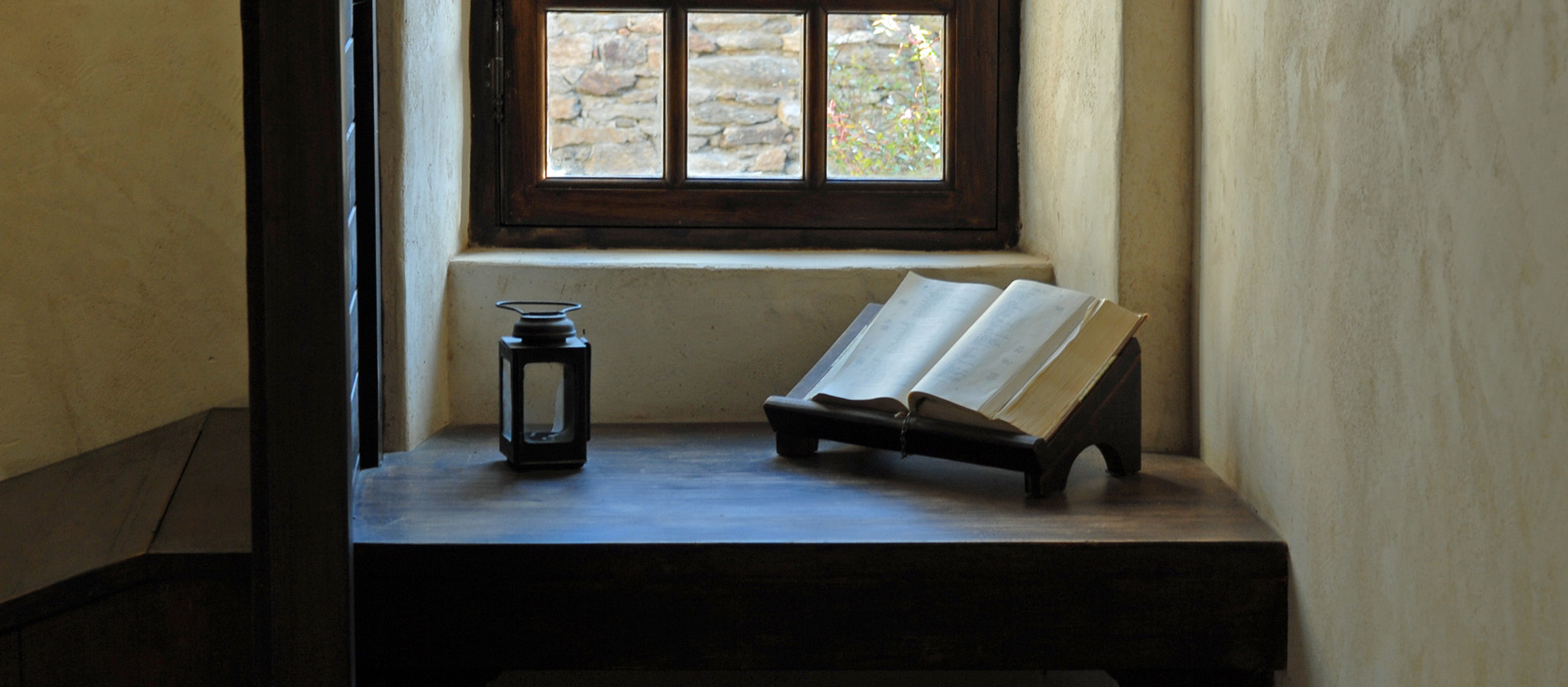Around the monastery dungeon – a place to retreat with extra space for God

withdrawn and connected at the same time
Most religious people have a small private dormitory called a cell. This hall performs many important functions, on the one hand in daily life in the monastery, and on the other hand also in the exercise of the faith: it is the smallest living unit in the monastery.
By Kirsten Marie Peretz (KNA) | Bonn – 02/20/2022
When you hear the word cell, you either think of a prison cell or the smallest living unit of all living things. However, one rarely thinks of the monastery cell – and the first associations with this term do not always have a positive connotation. It is an essential part of monastic life and makes being together in the community possible in the first place. The first two ideas can indeed give clues to the meaning of the monastic cell.
A prison cell is a place where a person is alone and isolated. In prison of course not voluntarily. In the monastery, the sister or brother withdraws voluntarily and voluntarily into his cell. It’s not locked from the outside, but the hive is clearly a place no one else can get to. It is the most special place for a religion, where one does not visit the other either. There are corresponding common rooms for this.
Silence and prayer room
Instead, the dungeon is a place of silence and prayer where a sister or brother can be alone and with God. It is the space where you can relax, where you can seek comfort when society is a little stressed, and where you can also seek God. Therefore, the monastic cell is usually furnished rather simply. It should be a space where the religious can focus on the essentials. Ultimately, that is, one has to be in the relationship with the Lord, who called her or called her to this form of discipleship.
Thus, in a way, the dungeon is also the smallest living unit in the monastery. It’s not just a room to sleep, read, or pursue special hobbies. Instead, the cell is where religious life can grow and flourish. Here you can calmly reflect on the day’s events or start the day with meditation. It is also the place that helps gather new energy while resting and sleeping. And it is a protective place because, as already described, no one bothers you here, you are completely alone and you can let yourself go – at least to sleep.
The cell is the place “where religious life can grow and flourish”.
Thus, through voluntary withdrawal, religious life can grow and bear fruit in the hive. Therefore it is one of the most valuable places in the monastery and must be taken care of carefully.
But since not everyone has the opportunity to return to the dungeon again and again or even call such a cell their own, it is comforting what Catherine of Siena says about the cell: the saint speaks of the fact that the cell is not necessarily the cell of the monastery’s cell room – after all, it was not She has such a dungeon herself – but this dungeon should exist in one’s heart as a place of retreat and a place of encounter with God. So it is always and everywhere possible to withdraw from what is happening and withdraw.
The meeting place for God is in your heart
So you do not have to go to a special place where you can be completely with yourself and with God, but each person already holds that place within himself. This is convenient when you are traveling, but also when you are in company and really need a short break. No one can stop you from pulling into your heart and resting there. As with the place cell, no one has access per se – a place that can aid in reorganization.
It is therefore clear that one’s heart as a “cell” must be carefully looked after. In this way it can become a place of life that one loves to enter and one loves to withdraw into. What happens around you then doesn’t matter anymore. Because here you have a place where you can be yourself.
By Kirsten Marie Peretz (KNA)

Communicator. Reader. Hipster-friendly introvert. General zombie specialist. Tv trailblazer





